Automotive Archaeology: The Barn Find – Monterey
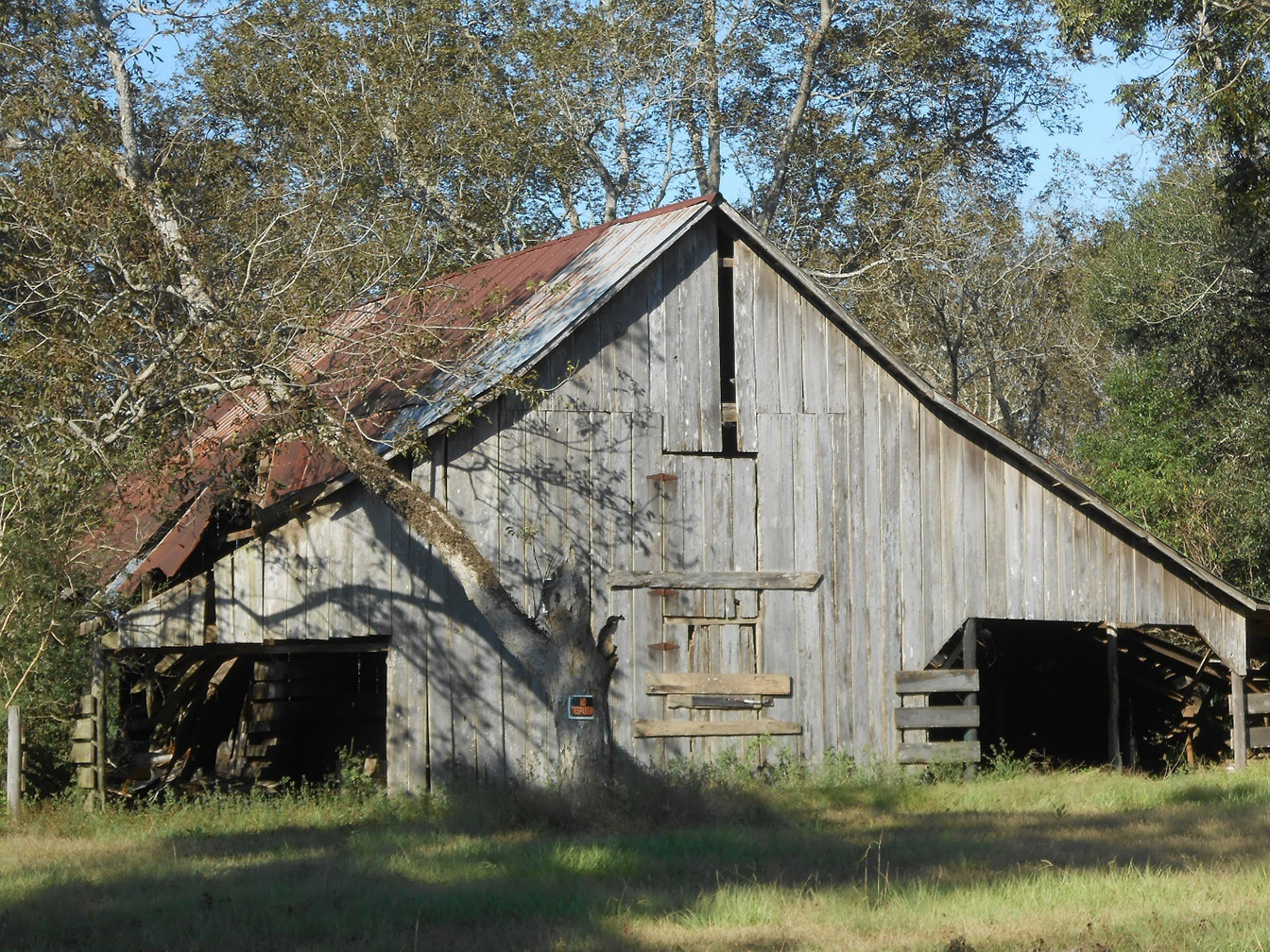
Possible location of buried treasure? (Terry Platt / CC-BY SA 4.0 at Wikimedia Commons)
Stories of individuals who have found a classic vehicle in an obscure location will probably always juice the pulses of classic car enthusiasts. The thought of discovering a long-forgotten treasure tucked away in a dusty old barn is a dream that almost anyone with an interest in classic cars has entertained at some point. These hidden gems, known universally as “barn finds” even though they may have been found in a different structure or setting, frequently include an intriguing story regarding their prior history that includes why they ended up where they were kept.
Those individuals who uncover a forlorn barn find experience a thrill that the rest of us enjoy along with perhaps a touch of envy. There are many stories of such discoveries, and there are probably more stories that have yet to be shared as past experience has illustrated over time. Undoubtedly, readers will know someone who has discovered an amazing machine while others may have actually stumbled across one in the proverbial barn or elsewhere. As a tribute to barn finds, this section of the guide contains stories of classic vehicles that may be familiar to some readers due to their notoriety along with others that may be less known. Some of the cars have contended at the Pebble Beach Concours and others may grace the acreage of the 18th hole of Pebble Beach Golf Links on some future date. Just for fun, there are two stories of literal buried treasures, one of which is known but will probably continue to rust in piece. In any case, hopefully the following stories will entertain readers and perhaps inspire a few to undertake their own searches.
• • • •
Exiled To The Colonies: 1933 Rolls-Royce Shooting Brake

This shooting brake’s unmistakable Rolls-Royce heritage is clearly evident in this front view. (Mr.choppers / CC-BY SA 3.0 via Wikimedia Commons)
Classic car enthusiasts everywhere will probably recognize the distinctive grill and hood ornament on this car as classic symbols of Rolls-Royce. It is also obvious that the body of this car classifies it as a woodie, which is commonly associated with station wagons in the U.S. and an iconic symbol of California surf culture of the 1960s. However, the term shooting brake was the designation for such vehicles long before woodie became popular. Its roots are in Europe. stemming from the days when aristocratic Europeans used wagons pulled by horses to go hunting for wild game. The “brake” portion of the term came from the name for a carriage used to train and break in young horses. These wagons had two doors and space to transport all of the items that they would need on hunting excursions such as guns, sporting dogs, and picnic supplies.
With the advent of motorized vehicles starting in the 1890s horses were replaced and specialized vehicles were developed to fulfill this need, since early automobiles had very little (if any) storage space. These vehicles were often conversions of existing models, with the Rolls-Royce 20/25 being a popular vehicle for such a modification, which the car illustrated above is an excellent example. Rolls-Royce produced the 20/25 as a lower-cost product than its 40/50 Ghost, which was important for customers impacted by the economic downturn following World War I. The 20/25 was a popular model as evidenced by 3,800 cars being produced from 1929-1936, from which an estimated 50 vehicles were converted into shooting brakes.
Regarding the story of the car illustrated here, it is a 1933 Rolls-Royce 20/25 carrying serial number GRW34. It was originally a sedan whose body was constructed by a company named Corsica Coachworks of North London, U.K. After being in service for a number of years, it was a common practice for owners to put a new body on a car that had been well-used but still had a solid chassis and mechanicals. In this case, GRW34 was converted into a shooting brake after the end of World War II by Jersey Coachbuilders located in the U.K.’s Channel Islands.
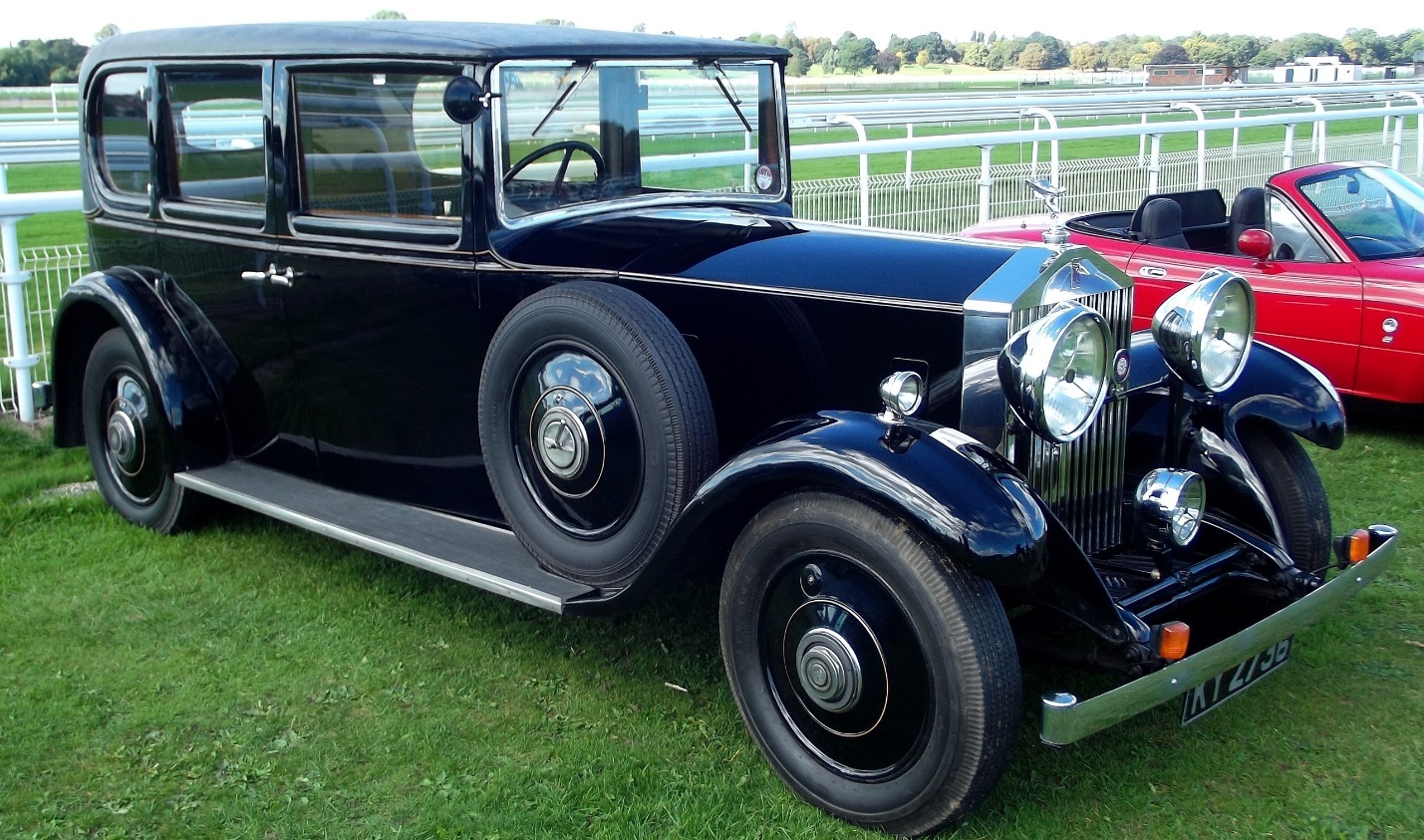
Chassis number GAU12 is a 1932 Rolls Royce Rippon saloon (sedan) and shows what GRW34 may have looked like before its conversion into a shooting brake. (Thomas’s Pics/ CC-BY SA 2.0 via Wikimedia Commons)
Sometime in the 1950s, Nathaniel Logan Lewis and his wife Dorothy of Macon, GA, purchased the car from Rolls-Royce in London and had it shipped to New York. They picked up the car there and drove it back to their home in Macon. Mr. Lewis apparently enjoyed cars to the extent that he drove a Maserati in several sports car events under the name “Logan Lewis” from 1956-1959. He also owned classic cars that included a 1910 Rolls-Royce, a 1939 Jaguar SS 100, and a late 1940s Jaguar XK120. Interestingly, after Mr. Lewis passed away in 1966, his widow Dorothy sealed the garages where their cars were stored. The cars remained in this condition until an auction house made contact with her in the 1980s to follow up on a tip about the existence of Mr. Lewis’ Maserati. It turns out that the Maserati was an A6GCS/53 Fantuzzi Spyder, serial number 2058, and is the car that Mr. Lewis drove in sports car events in the 1950s. The discovery of this car by itself was a barn find. After Dorothy sold the Maserati to the auction company and later sold the SS 100 to them as well, the Rolls-Royce remained sealed with several other cars until Dorothy passed away in 2002. Her will stated that the shooting brake and the rest of the cars were to be unsealed and sold at auction. Through this action the remaining cars could be added to the lore of barn finds. Subsequently, the shooting brake was offered for sale by auction house Guernsey’s in May of 2021 for no reserve and an estimated sell price between $80,000 and $120,000.
Today, the term shooting brake has long been discarded after its replacement by estate car in the U.K. and station wagon in the U.S. In addition, it is easy to see that automotive technology has evolved to the point that the SUV has overwhelmingly replaced estate cars and station wagons.
• • • •
A Garage Sale For The Ages: 1937 Bugatti Type 57S Atalante

Bugatti 57S chassis 57502 was hidden for 48 years until its discovery in 2008. (Bonhams via Wikimedia Commons)
In general, Bugatti automobiles are well-known for balancing luxury with excellent performance, and the Type 57S Atalante stands out as an example of one of their best offerings. It is also one of their rarest Bugatti models since only 43 Type 57S cars were built. Further, within its total production just 17 of the Type 57S cars were fitted with Atalante coupé coachwork from the company’s own shop in Molsheim.
Until 2008, most of the Type 57S Atalante coupés had been accounted, but in that year the discovery of previously missing chassis 57502 was major news. It was originally ordered new in June 1937 by Francis Richard Henry Penn Curzon, 5th Earl Howe (May 1, 1884 – July 26, 1964). Howe was an officer in the Royal Navy and a member of the U.K. Parliament who began racing in 1928 at the age of 44. He raced in six 24 Hours of Le Mans events from 1929 to 1935 (except 1933), and won in 1931 in his personally-owned Alfa Romeo 8C 2300. Three later individuals owned the Bugatti until 1955 when it came into the possession of Dr. Harold Carr in Britain. Dr. Carr drove the car until 1960, then stored it in a garage near his residence in Newcastle-Upon-Tyne. The Bugatti remained undisturbed until after Dr. Carr’s death in 2007, when his nephew found it in the garage while clearing out his uncle’s possessions in 2008.
With its mostly-original configuration established and history confirmed, the Carr family contracted with Bonhams to sell the Bugatti at auction in the condition that it was found in 2008. As a result, Bonhams advertised it as a marquee listing in their auction at the 2009 Rétromobile car show in Paris. It sold for US$4,408,575 and was subsequently restored and sold again at auction by Gooding & Co. for $10,433,965 in September 2020. This figure places it as the most expensive Type 57S sold at auction. However, in 2010 a 1936 Bugatti Type 57SC Atlantic carrying chassis number 57374 took the record for the highest sale price of any Type 57 when it was sold to a private buyer for an estimated $30 million. Its history includes being previously named Best Of Show at the 2003 Pebble Beach Concours d’Elegance and display as a centerpiece in the former Mullin Automotive Museum in Oxnard, CA.
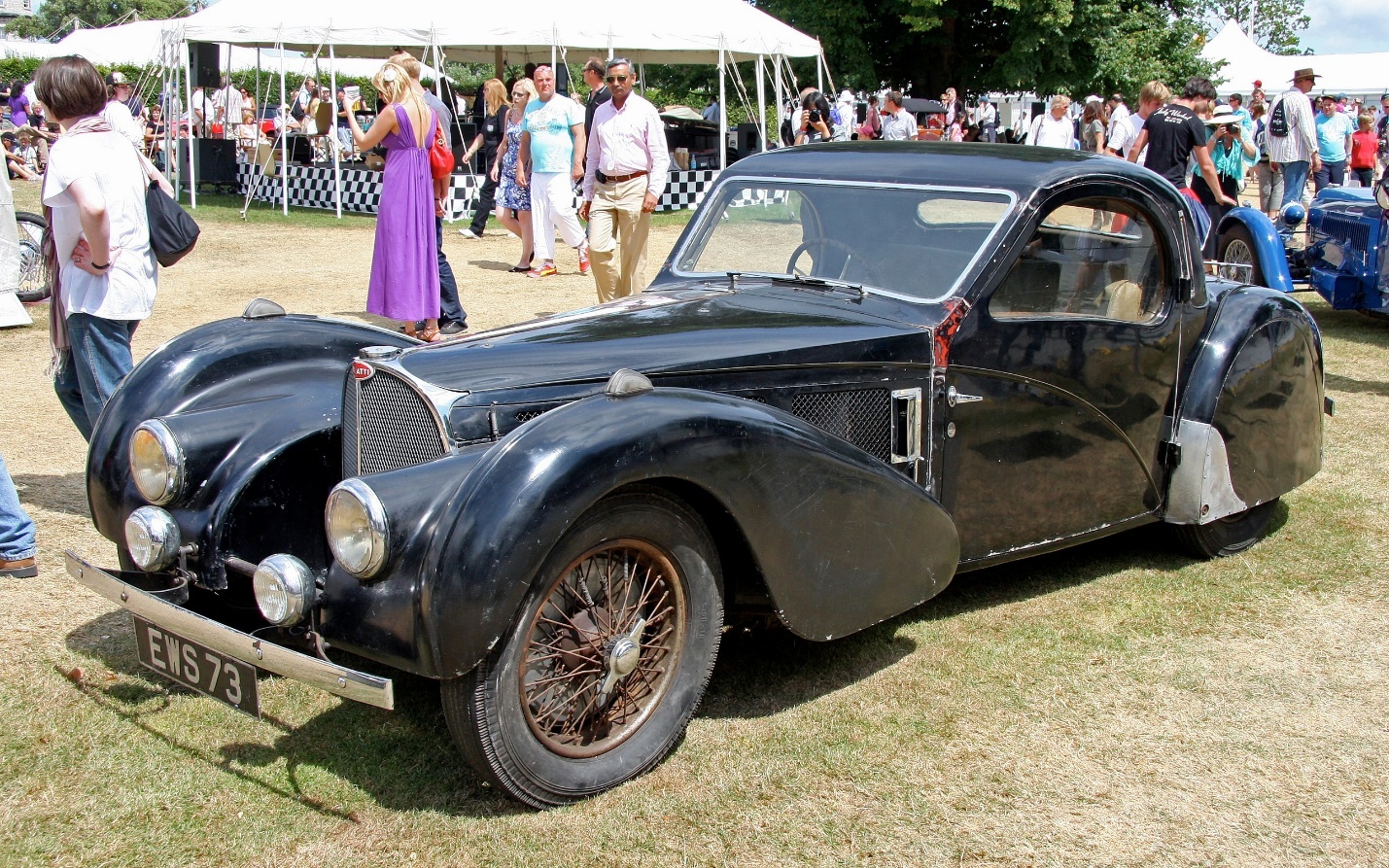
At Goodwood (U.K.) in July 2009 and prior to the Bonhams auction in Paris, the Bugatti is now in the light of day after being cleaned but is still unrestored. (Brian Snelson / CC-BY SA 2.0 via Wikimedia Commons)
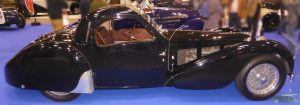
Chassis 57502 in 2018 after being fully restored. (andreboeni / CC-BY SA 2.0 via Wikimedia Commons)
• • • •
Hot Rod, Italian Style: 1953 Fiat Abarth 1100 Sport
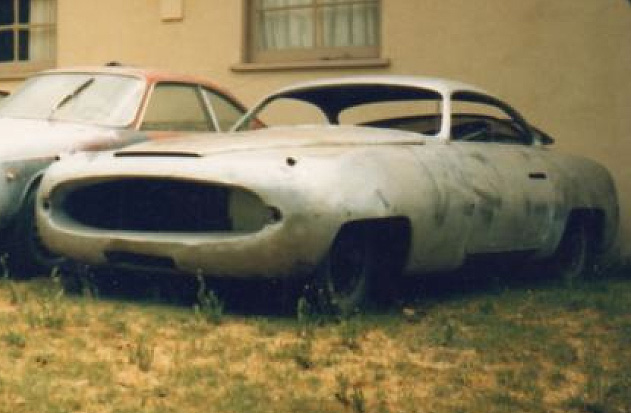
The shell of a truly one-of-a-kind design prior to restoration. (Courtesy of Sports Car Digest)
Of the barn finds included in this section of the guide, the 1953 Fiat Abarth 1100 Sport by Ghia came the closest to being named Best Of Show at Pebble Beach. It is a product of Italian automotive brands Abarth and Fiat, who began a long-standing collaborative arrangement in 1952 that resulted in the production of the one-off Abarth 1100 Sport.
Abarth is famous for making racing-inspired modifications and performance enhancements to various models from Lancia, Cisitalia, and Simca, and most famously Fiat cars. In 1950, Abarth had assembled four 205A competition chassis. Three were used, while the last one gathered dust at the back of the workshop while awaiting a project in which it could be used. At the same time, Fiat was preparing to unveil its brand-new 1100-103, a compact, reliable, practical, and economical sedan with a completely unremarkable appearance. As an advanced study, the remaining 205A chassis was fitted with an engine and transmission developed for the new Fiat. It was also given a streamlined body developed by famed coachbuilder Carrozzeria Ghia to explore ways to obtain maximum performance from the Fiat’s 64-hp engine. Interestingly, Ghia was concurrently producing bodies for Chrysler’s Advanced Styling Group. It was therefore inevitable that the lines of the Abarth 1100 Sport bore a scaled-down resemblance to the Chrysler designs, particularly the Dodge Firearrow series show cars with their wide oval front grill and low profile.
Ghia exhibited the car at the 1953 Turin Salon, where it shared the stand with another Ghia creation, the much-acclaimed Dodge Firearrow concept. This was the same show at which Fiat introduced the 1100-103. It was well-received by the Italian motor press as evidence of the abilities of Abarth and Ghia to maximize the performance and style of the new model. After the show, Abarth sold the car to William Vaughn, apparently a Fiat dealer in New York. Vaughn exhibited it at the 1954 New York Auto Show as the Vaughn Super Sport Wildcat. He planned to install an 8-cylinder engine in place of the car’s 4-cylinder unit and trumpeted it as having “the first overhead camshaft V-8 in the USA”. Fiat reportedly sued Vaughn over the continued use of the automaker’s name as part of his business. With this action the plan was apparently scrubbed and at some point shortly afterwards the Abarth disappeared.
Iin 1978 the car resurfaced in the ownership of Peter Sherman, a Maitland, FL car dealer/collector and pilot who owned a World War II P-38 Lightning registered N3005 (s/n 5747). After Pete and his wife died in the crash of the P-38 on August 1, the car passed to its next owner in an estate auction. In 1982, the car was found in a barn in Maryland and acquired by two Fiat enthusiasts. in near basket-case condition. It further deteriorated in the care of two additional owners until 2010. At that time a restorer in Calgary, Alberta, Canada acquired the car and began a five-year project to return it to its former glory, which was successful.
After completion of the restoration, the Abarth was exhibited at the 2015 Pebble Beach Concours d’Elegance, where it won its class (Postwar Early) and was runner-up for Best Of Show award. Since its rewarding appearance at Pebble Beach the Abarth was sold at RM Sotheby’s auction at Monterey in August 2017 for $891,000. It subsequently won a Best Of Show award in the Audrain Concours in Newport, RI, in October 2021.
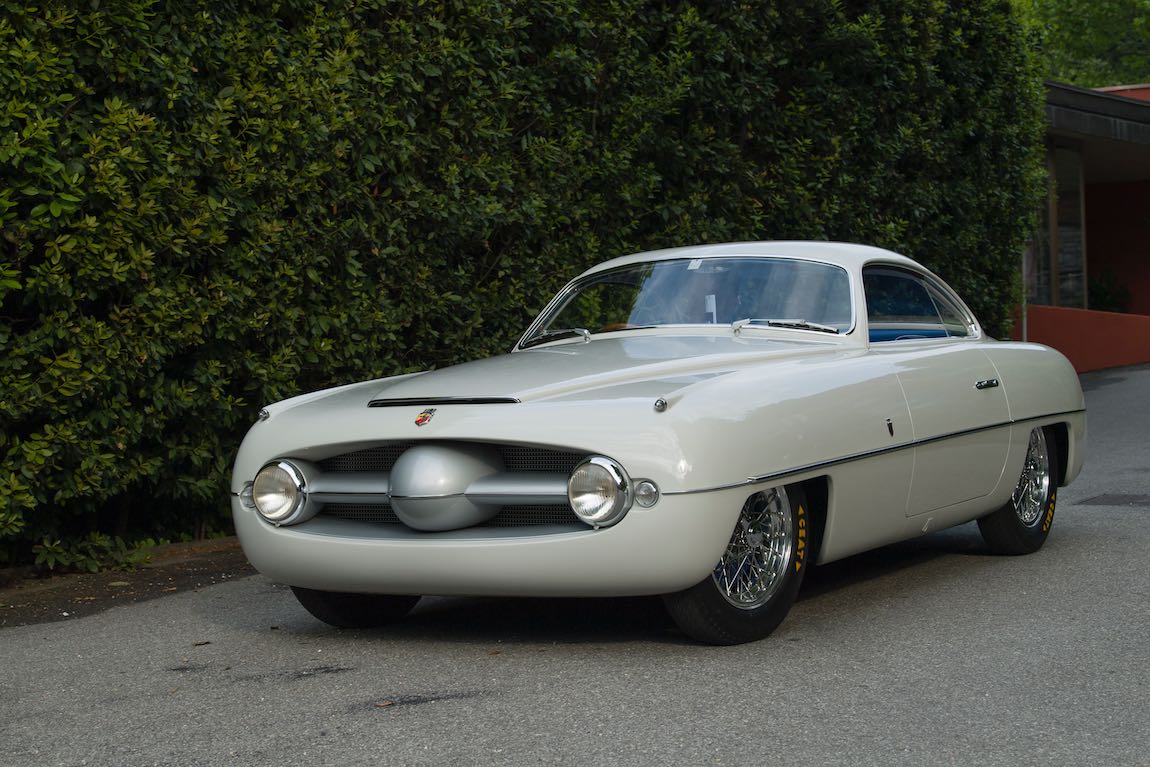
This one-of-a-kind design that had not been seen since the 1954 New York Auto Show garnered two awards at Pebble Beach in 2015: Best in Class, Postwar Early and runner-up for Best of Show. (Courtesy of Sports Car Digest)
• • • •
Accessorized For Flight: 1955 Mercedes-Benz 300 SL Gullwing
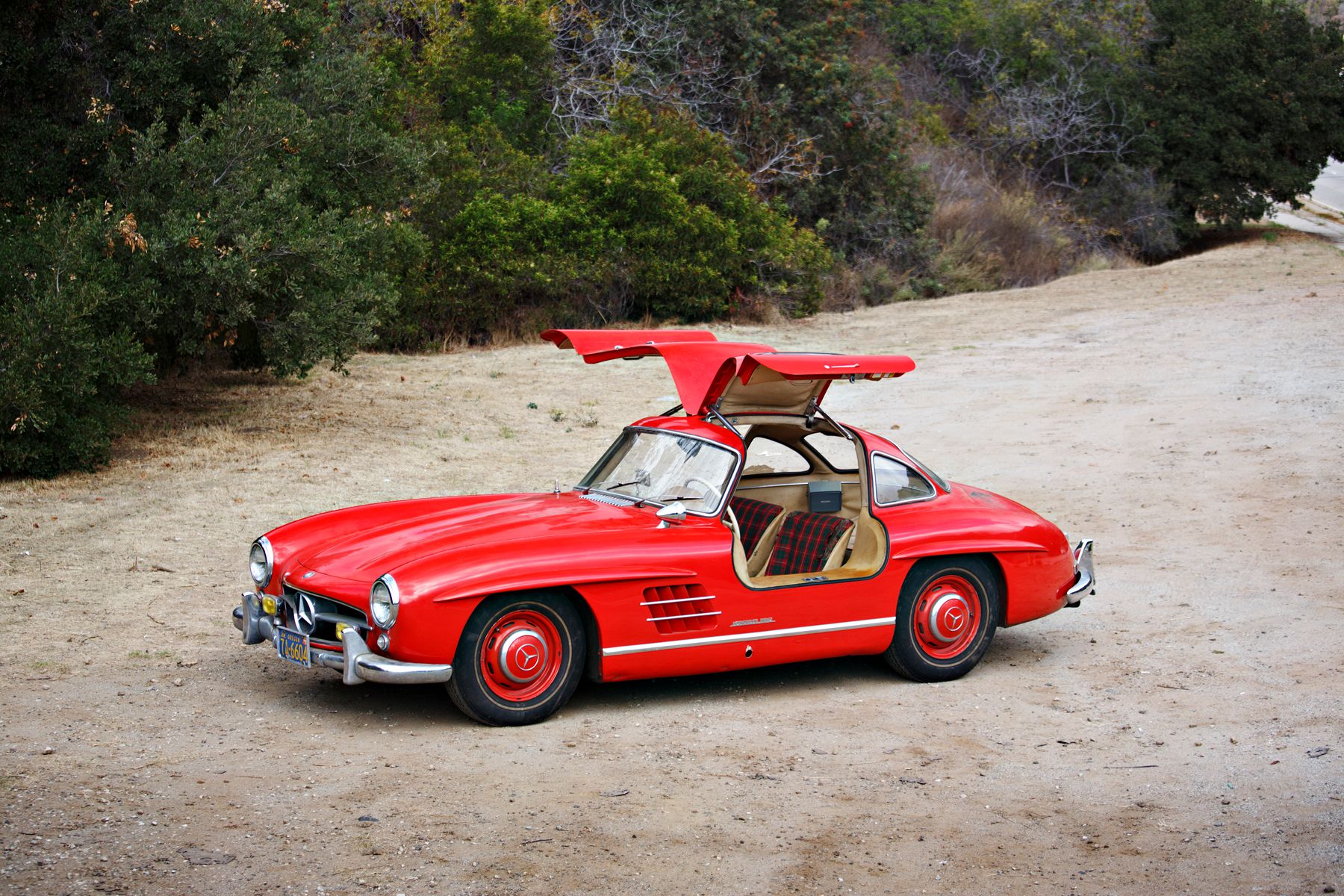
This 300 SL was approximately the 1,000th of the 1,400 Gullwings produced and was kept by original owner Sigurd A. Nygren for over 60 years before emerging from 40 years of storage. (Courtesy of Gooding & Co.)
Chances are that any word association exercise involving the name Mercedes-Benz will generate responses like quality, performance, expensive, or any of their respective synonyms. When first introduced in the mid-1950s the 300 SL was at the forefront of the company’s product line and exhibited all of the aforementioned qualities. Through its derivation from the legendary W194 race car, its innovative tubular steel chassis, powerful 3.0L inline 6-cylinder engine with direct fuel injection, and distinctive gull-wing doors contributed to its designation by many automotive historians as the first supercar. Naturally, all of these features came with a hefty price tag of around $7,000, equivalent to over $83,000 today. As a result, 300 SL buyers tended to be wealthy heirs, celebrities, and other people of means for whom the selling price was not an issue.
In one case, however, a 300 SL was purchased by a man named Sigurd (Sig) Alex Nygren whose occupation was far from glamorous. The background on this occurrence starts with Sig being an Oregon native and working as a shipboard engineering officer in the U.S. Merchant Marine. While in Los Angeles, he visited Mercedes-Benz Distributors Inc.’s showroom at 6465 Sunset Boulevard, which was one of several outlets owned by Max Hoffman, who was the almost mythical foreign car importer of the time. Perhaps because Sig was also an aviation enthusiast and licensed pilot, the aerodynamic lines of the 300 SL and the rare (29 produced) alloy-bodied version of the model were of particular interest to him. The fact that it was nicknamed “Gullwing” might have also been a selling point because in the 1930s Stinson Aircraft built several versions of its Reliant SR with shapely wing designs that resulted in their identification with the same nickname. Unfortunately for Sig, the alloy version of the Mercedes was a special order and its extended delivery time was apparently more than he was willing to wait. He therefore opted to buy steel-bodied chassis number 198.040.5500098, which he paid for in cash. It was completed in a very striking Fire Engine Red and had an interior clad in special-order Fawn Vinyl/Red Plaid fabric upholstery.

This Stinson Reliant SR-10J (NC21104, serial number 5830) was one of several models nicknamed Gullwing well before the Mercedes 300 SL. It was built in 1938 and was flown by famous military and civilian aviator Jimmy Doolittle when he worked for Shell Oil in the late 1930s. (Bengleman / CC-BY SA 4.0 via Wikimedia Commons)
Sometime after purchasing the Mercedes, Sig’s engineering and aviation background manifested itself through his addition of several items to the interior and exterior of the car. On the outside, he installed yellow fog lamps and a reverse light activated by a toggle switch. On the inside, he added an altimeter, aircraft chronometer, and thermometer, along with a fan for defrosting the windshield. A later addition was an eight-track cassette player and six speakers.
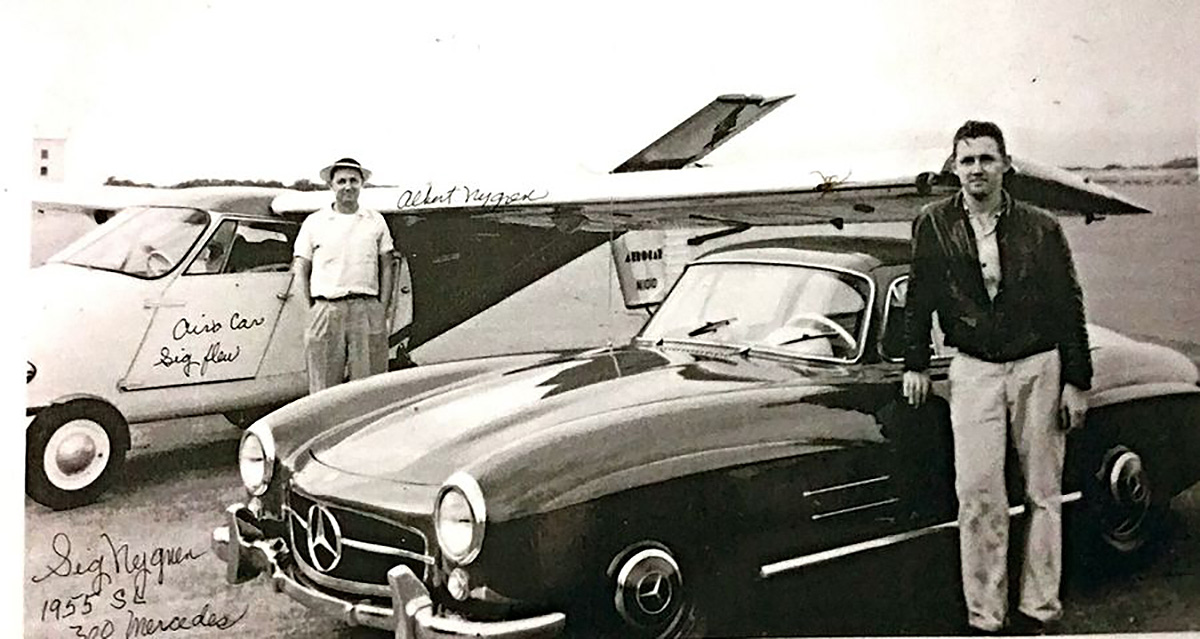
A photograph in Sig’s materials shows him standing next to the Mercedes with his twin brother Albert, also a pilot, in the background and posed with Taylor Aerocar registered as N101D. The FAA-certified Aerocar is a roadable aircraft built in the mid-1950s. All six Aerocars were built in Longview, WA, about 50 miles from Astoria, OR, where both Nygren brother’s homes were located. Astoria may also be where this photograph was taken after one or both brothers flew the Aerocar. N101D is still listed as active in the FAA registry. (Courtesy of Gooding & Co.)

These views show Aerocar N101D in flight and as a land vehicle. The wings detach and fold backwards for towing on wheels that are stowed in the wing’s leading edges when in flight. (Flying Magazine Archive via Google Books)
Sig then reportedly drove the car approximately 30,000 miles and serviced it regularly until a mechanical issue caused him to park it in his hangar at Karpens Airport near Astoria, OR in 1976. Various sources intimate that the car was never driven after that time or that it was sparingly taken around the local airport area until being fully stored in the late 1990s. It is confirmed that the car remained there along with at least two aircraft, a Luscombe 8F registered N1546B (serial number 6173) and a 1940s Cessna 120 or 140, until Sig passed away in December 2013.

After Sig and his wife died Sig’s stepson discovered at least two old aircraft (note the tail of a Cessna 120 or 140) along with the Mercedes under wraps and stored in a hangar at Karpens Airport, OR. (Courtesy of Autopista)
After Sig’s wife died in 2016, his stepson came to the hangar to clean it out and discovered its classic contents. Gooding & Co. representatives were called to review the car and found that it was completely original. Sig had retained all of the car’s service records, the tool kit provided with the car, and even various left Mercedes tags and labels still affixed to parts of the engine and bay. It was sold in unrestored barn find condition by Gooding & Co. in their Scottsdale, AZ auction in January 2017 for $1,457,500 (including buyer’s premium). While no information has been found concerning the Mercedes’ post-auction history, hopefully the buyer is progressing on the path to either restore the car or to preserve it as found, in consideration of its unusual provenance.
• • • •
Elvis Presley’s Commuter Car: 1957 BMW 507

Miss Germany beauty pageant contestant (later actor) Uschi Siebert, Miss Hessen of 1958, gives Elvis the key to his new (to him) BMW at Autohaus Wirth in Frankfurt. (Arnaud 25 / CC-BY SA 4.0 via Wikimedia Commons)
When Elvis was drafted into the Army in 1958, his prior interest in vehicles may have contributed to his assignment as a Jeep and tank driver. After training, he was sent to a tank unit in Friedburg, Germany. Military service came with sacrifices, but barracks living was one that Elvis could forego. He found accommodations in nearby Bad Nauheim, but now he needed personal transportation to commute between his residence and Friedburg. For this reason, he opted for a local product: a used 1957 BMW 507 that was one of just 254 cars of this model. Then-Private Presley bought the car from dealer Autohaus Wirth in Frankfurt, about 20 miles south of Bad Nauheim, in December 1958. Chassis number 70079 had been used by BMW as a demonstrator for the motor press before winning a number of competitions with famous prewar racer Hans Stuck at the wheel. After taking ownership, Elvis had the color of the car changed to red because female fans were leaving lip prints and messages to him in lipstick on its white exterior.
Elvis used the car during his 18-month tour in Germany and completed his military service in March 1960. Although he shipped it back to the U.S., in a few months the car was taken on by a New York Chrysler dealer as a trade-in. The dealer recognized an opportunity and advertised it for sale as the “Elvis Car”. A disc jockey and hotrod enthusiast in Alabama named Tommy Charles bought the car for $3,500 and modified it by installing a Chevy V8 Borg-Warner engine and Chevy rear axle. It went through two other owners before ending up in 1968 with an aeronautical engineer in California named Jack Castor. He was told that its provenance included ownership by Elvis but there was no hard evidence to back up this claim, so he may have thought it was just hearsay. Castor used the car as a daily driver until 1974, when he stored it to gather parts for an eventual restoration. Fast forward to 2009: the car was still in storage when a chance review of an article in a car magazine brought to Castor’s attention that there was an active search for Elvis’ BMW. A review of the car and its records by experts soon confirmed that it was connected with Elvis.
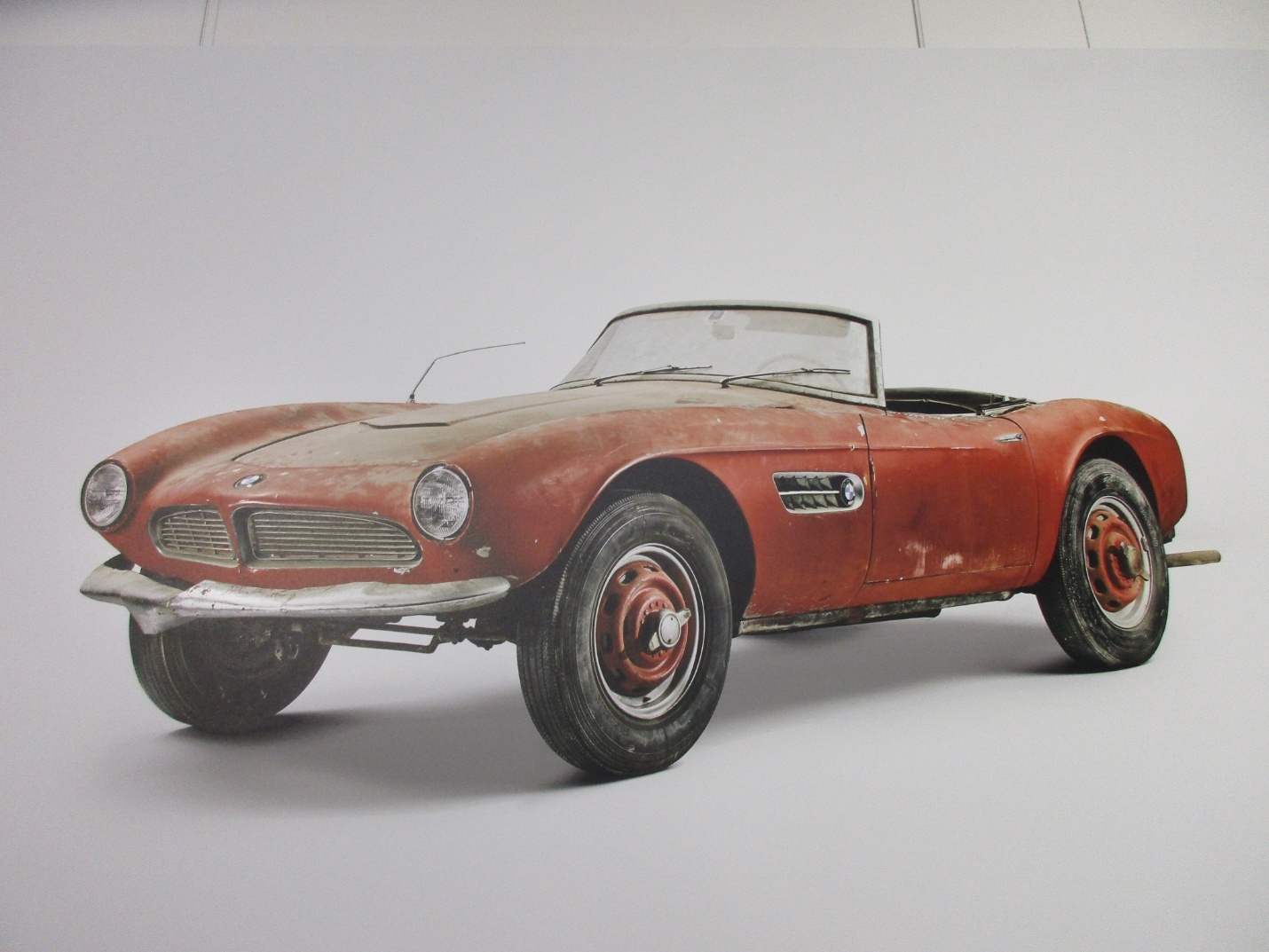
Before: Elvis’ BMW upon its purchase from Hohn Castor (Arnaud 25 / CC-BY SA 4.0 via Wikimedia Commons)
The research effort and its climactic result piqued interest within BMW to purchase and restore the car. Negotiations took time but were successful, kicking off a two-year restoration. The car was shown at the 2016 Pebble Beach Concours d’Elegance and is now displayed at the BMW Museum in Munich. It is a great example of a rare and desirable vehicle, as other 507s have sold for $2-$3 million. Former British racer John Surtees’ hardtop sold for a record $5+ million in 2018. More 507 history is in the accompanying story of marques that have never won Best Of Show.
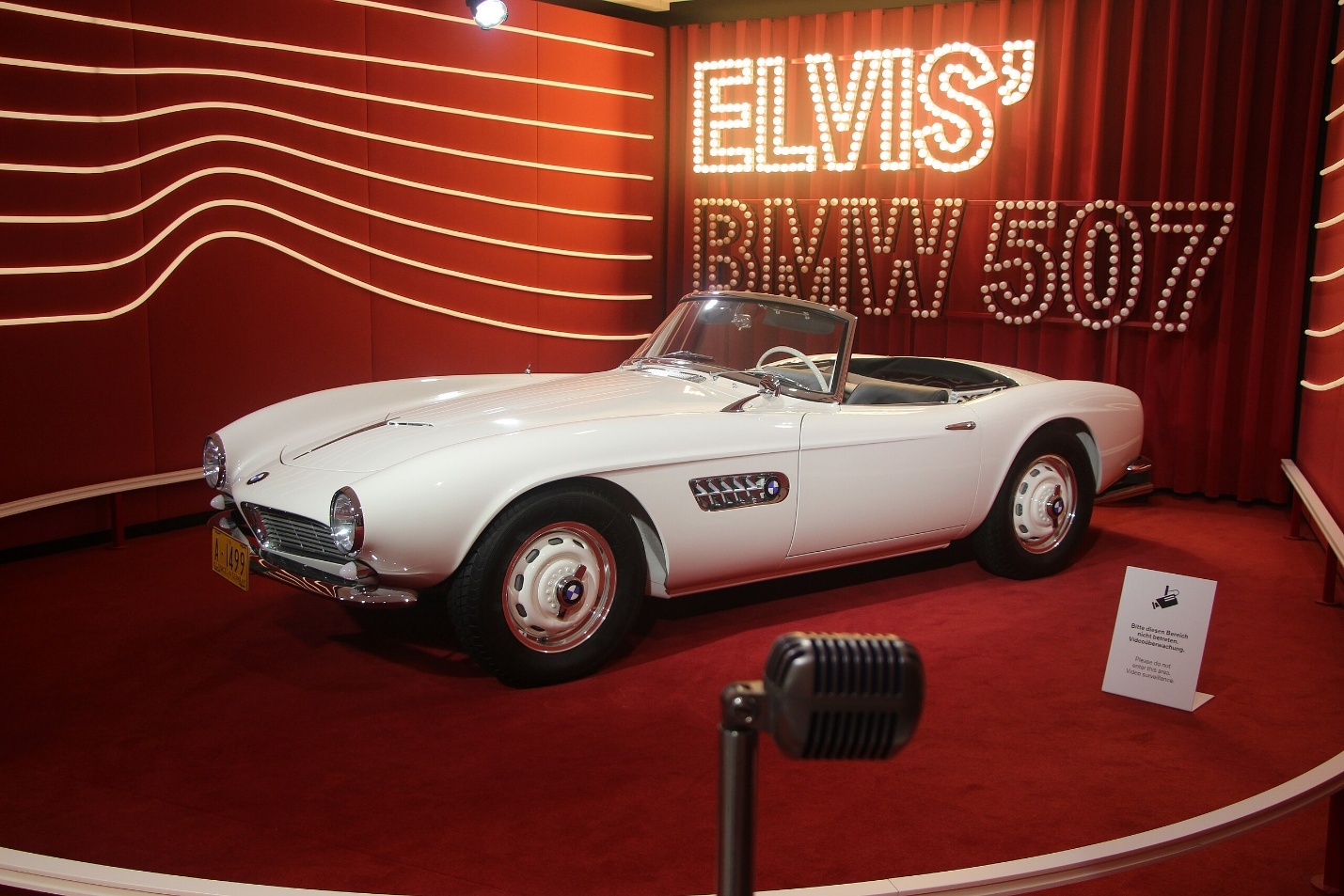
After: Elvis’ BMW returned to its original glory. (Wikisympathisant / CC-BY SA 4.0 via Wikimedia Commons)
• • • •
A Star Turn: 1961 Ferrari 250 GT SWB California Spider
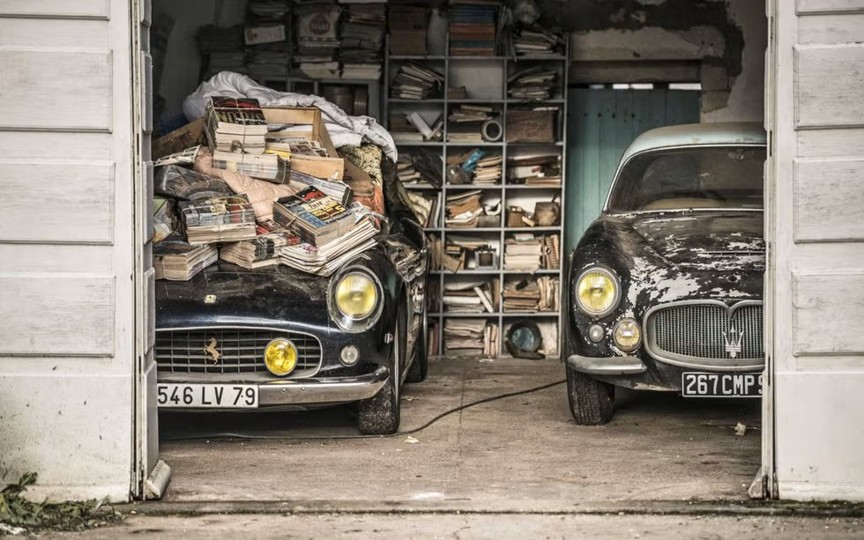
The Ferrari (left) as it was found next to a Maserati A6G/2000 (right), two of the 60 cars in the Baillon Collection at Château Gaillard, a quiet rural estate in Échiré near Niort in western France. (Courtesy of Classic Driver)
A hidden collection of 60 incredible automobiles originally amassed for a proposed museum in France that never materialized was a major story among classis car enthusiasts in 2014. Upon visiting the collection of owner Jacques Baillon, one automotive expert likened the experience to what the archaeologists who found King Tutankhamun’s tomb may have felt. Valuable machines carrying famous names such as Bugatti, Delage, Delahaye, Hispano-Suiza, Maserati, Panhard et Levassor, and Talbot-Lago were there, some with coachwork by equally famous houses such as Chapron and Saoutchik. All were scattered among various structures on the property.
Several Ferrari’s were also included in the collection, but one particularly interesting example quickly became the center of attention. A 1961 Ferrari 250 GT SWB California Spyder, one of the most sought-after classic cars in the world, was found under stacks of old magazines in a shed on the property. Chassis number 2935 was one of a total of 106 California Spyders, of which 56 were built on the short wheelbase chassis (SWB). Further, only about 37 of the SWB California Spyders were delivered as the most-desired covered headlight version. Research quickly established that the car’s ownership extended back to legendary French actor Alain Delon (November 8, 1935 – August 18, 2024) starting in 1963. Photographs exist that show Delon driving the car in Europe and in the U.S while accompanied by actors Jane Fonda and Shirley MacLaine at various times. After Delon sold the car in 1965 it progressed through a number of owners until its acquisition for the Baillon Collection in November 1971. After extrication from its resting place, the Ferrari was sold in unrestored condition in 2015 by auction house Artcurial for $18.5 million. This figure places this Ferrari as one of the most expensive barn find cars ever sold.

On display prior to sale in barn find condition. (PIMAP / CC-BY SA 4.0 via Wikimedia Commons, cropped)
Shortly after purchasing the car its new owner exhibited the Ferrari as a preservation car (unrestored) at the 2015 Pebble Beach Concours. Interestingly, the French license plate that was on the car when it was found had been replaced by the original Monaco-registered license plate (4452 MC) that it had while owned by Alain Delon. Sometime after its display at Pebble Beach the Ferrari underwent a full restoration. It has since appeared at the renowned Villa d’Este Concorso d’Eleganza in Italy’s Lake Como in 2019 and the Hampton Court Concours in the U.K. in 2023, where in both events it was the winner in its class.

At Hampton Court Concours 2023 with Monaco license plate. (MrWalkr / CC-BY SA 4.0 via Wikimedia Commons
• • • •
You Can Take It With You: 1964 Ferrari 330 GT America

Millionaire heiress Sandra West illustrates her enjoyment of her Ferrari 330 GT America. (Courtesy of MySA)
Sandra Ilene West made national news as a result of at least two great loves in her life, which she confirmed in a very unusual way that will be apparent later in this story. One was her husband Ike West Jr., scion of an old and wealthy Texas family whose fortune was made in cattle and oil. When Ike Jr. moved from Texas to Beverly Hills in 1963 to establish a securities trading firm, he met and married Sandra, whereupon she soon forged her own identity in the local press as a Beverly Hills socialite. After Ike died in 1968 under somewhat mysterious circumstances in Las Vegas, Sandra dutifully carried out his wish to be buried in the family’s plot within the Alamo Lodge Masonic Temple Cemetery in San Antonio, TX. She then added heiress to her media persona by inheriting his estate worth between two million and five million dollars ($18M – $46M in 2025).
Sandra’s other love was her 1964 Ferrari 330 GT America, serial number 5055, and one of just 50 cars of this model produced by Ferrari. It was originally delivered in 1963 to Louis Chinetti Motors in Greenwich, CT and was painted in Midnight Gray. Its first recoded owner is listed in the 330 GT Registry website as film and TV producer Burt Sugarman of West Hollywood, CA. The site further notes that Sugarman owned the car for a very short time as Sandra West is listed as becoming the second owner in 1964, with the car now painted Powder Blue. Later in the 1970s, the garage in Sandra’s Beverly Hills mansion held the 330 GT plus two other Ferraris–a 1969 365 GT 2+2 and a 1974 Dino 246 GTS (serial number 08454). She also owned a Stutz Blackhawk, a very opulent custom American car designed by Virgil Exner that was built on a Pontiac Grand Prix chassis and manufactured from 1971 to 1987 in Italy. These were exceptional vehicles, but the 330 GT held a special place in her heart, as will be confirmed in the rest of this story.
In an interesting development, by the mid-1970s Sandra began to withdraw from the Beverly Hills social scene and focused on more solitary activities, particularly the study of Egyptology. Then, in late 1976 she was seriously injured in an accident while driving the 330 GT. While recovering from the accident she died in her sleep in March 1977 of an accidental overdose of barbiturates and codeine. Soon, it was found that her will contained a stipulation that she wanted to be buried in San Antonio, TX, next to her husband Ike. However, this emotionally touching request took an unexpected turn when she added that she wanted to be buried in her best lace nightgown while reclining in a comfortable position in the driver’s seat of her 1964 Ferrari. The tie of this request to Sandra’s study of Egyptology is probably not a coincidence. The act itself contributed to her heirs challenging the terms of the will. Their legal efforts came to an end when a judge ruled that all terms of the will must be exactly followed. Sandra’s stipulation was therefore carried out by first shipping the unrepaired Ferrari in a container to San Antonio, where Sandra’s body had been embalmed at a Texas mortuary while awaiting the outcome of the probate process. After the car arrived she was placed in her Ferrari/coffin which was inserted into a wooden crate before being lowered into the 20-foot-long grave in front of about 200 friends, family members, and a horde of media correspondents. Finally, the crate was covered in cement before the soil was replaced. This action was undertaken at the request of the funeral director due to his concern that the cemetery was in a high crime area; without the cement, the Ferrari could shortly be back on the street.
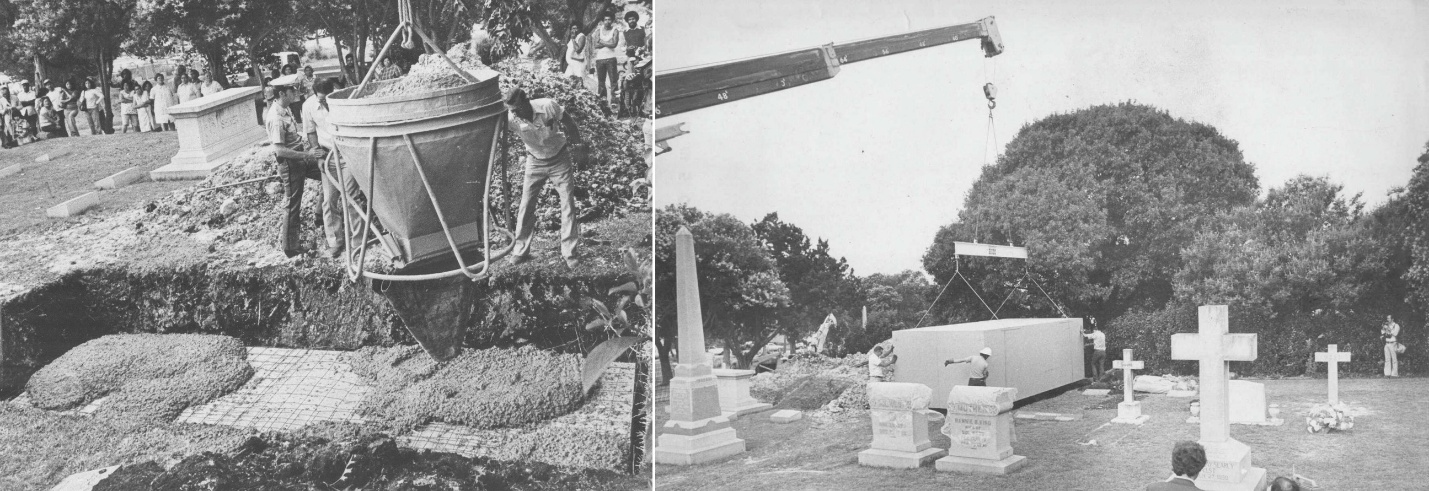
At left, the box containing the Ferrari and Sandra’s remains is being lowered into its final resting place, after which cement was added to seal the grave from unwanted attention by Ferrari enthusiasts. (Courtesy of MySA)
Shortly after Sandra’s burial her other cars were auctioned in another step to settle the estate. Sandra’s California attorney John Valentine was the high bidder for the 1974 Dino 246 GTS. It was one of only three units finished in a shade of green officially called Verde Medio Nijinsky, and had just 1,700 miles on the odometer. The Dino was bought and sold by a number of owners before its last known sale by Sotheby’s in a sealed bid auction held in November 2022. The 365 GT 2+2 was bought by Sandra’s Texas attorney Leroy G. Denman but no other information has been found about the car. Fitness guru Jack Lalanne was reportedly interested in the Blackhawk and is known to have owned one, but it is unconfirmed whether his car was formerly Sandra’s.
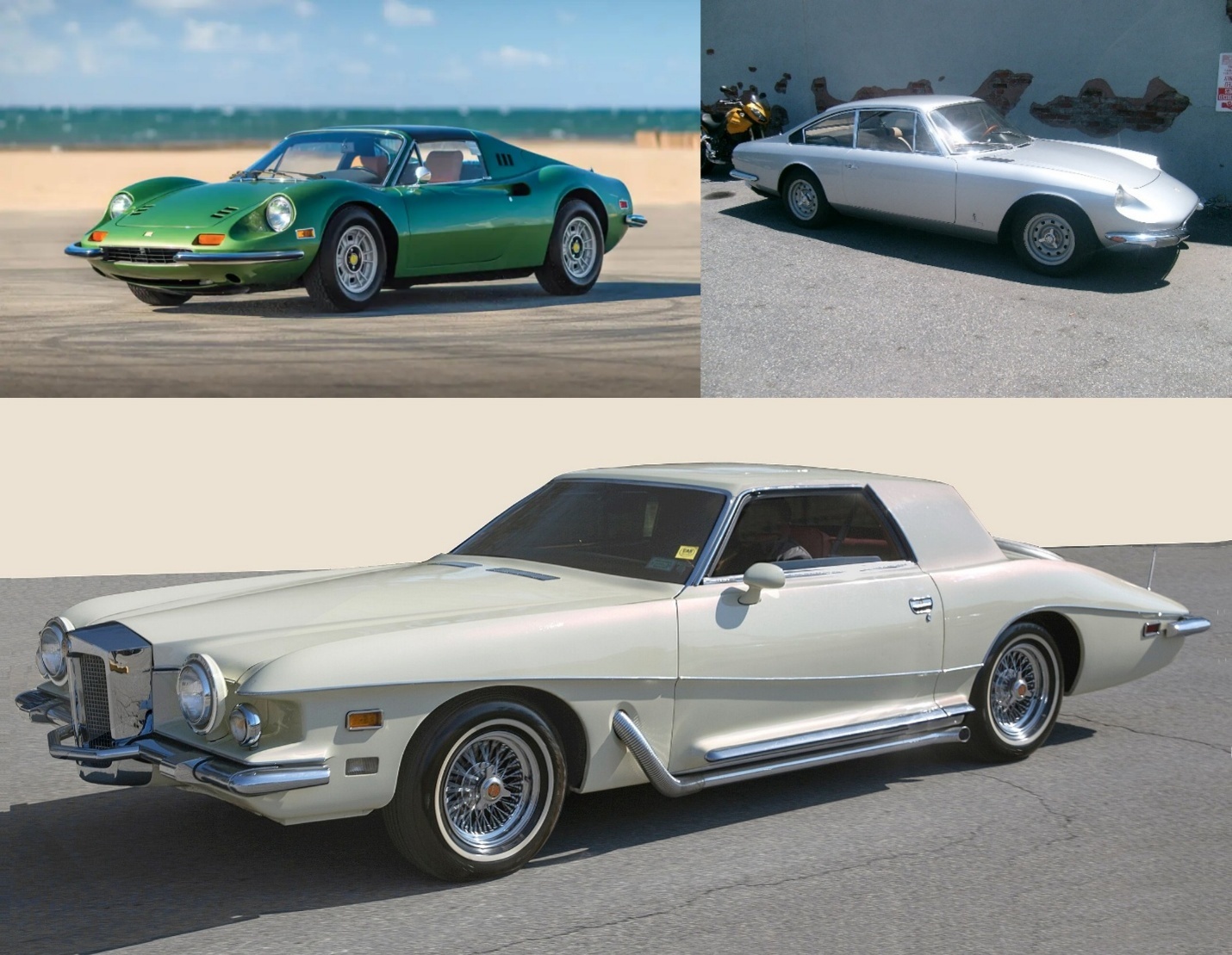
Sandra’s other symbols of 1970s wealth: her actual Ferrari Dino 246 GT at top left, and examples of her Ferrari 365 GT 2+2 at top right and 1975 Stutz Blackhawk. (Top left, courtesy of Sotheby’s; top right, Bruno Kussler Marques / CC-BY SA 2.0 via Wikimedia Commons; bottom, Mr.choppers / CC-BY SA 3.0 via Wikimedia Commons
Today, Sandra and Ike’s grave sites remain on the itinerary of local tour companies in San Antonio. Through the passage of time there is no clue at Sandra’s grave site as to what lies beneath. Yet the story lives on through narrations to tourists by local guides and in the collective consciousness of San Antonians who may take some pride in these celebrities who are forever in their midst.

Sandra’s and Ike’s head stones in the West family plot are surprisingly plain and do not reflect the extravagant excesses that they had publicly exhibited in their relatively short but eventful lives. (Both from Find A Grave.com)
• • • •
Lost And Found: 1974 Ferrari Dino 246 GTS

The Ferrari slowly emerges from 3 years of burial underground in a Los Angeles backyard by would-be car thieves.
(Courtesy of Los Angeles Times via Google News Archive)
Technically, this story that some readers may remember from the 1970s is not about a barn find as previously defined and exemplified in the prior narratives. Nevertheless, the details of the discovery of a stolen 1974 Ferrari Dino 246 GTS underneath the backyard of a home in Los Angeles, and that it closely and chronologically followed the story of another buried Ferrari (see page 15) are too interesting to exclude from this collection of found vehicles.
It begins innocently enough in December 1974, when a man named Rosendo Cruz took his wife to dinner to celebrate their anniversary at the Brown Derby, a famous and now long-gone chain of restaurants in Los Angeles. The couple drove to the Wilshire Boulevard location in the aforementioned Ferrari, which had only been driven about 500 miles after Mr. Cruz gave it to his wife as a gift in October of that year. Mr. Cruz later stated that he felt uneasy about utilizing the restaurant’s valet parking, so he parked the car himself on a side street. Upon leaving the restaurant after their celebration, the Ferrari was gone, and Mr. Cruz duly reported the car as stolen. After a routine investigation, he was paid by his insurer, Farmers Insurance, for the full $22,500 price of the car. With no leads on the car’s disposition nothing further was pursued on the matter.
In February 1978, the story was revived when it was reported that two boys were digging in the backyard of their Los Angeles home when one of them struck something metallic. They alerted two passing sheriff’s deputies to investigate, and their preliminary look revealed that the object was a car. After excavating the vehicle, it was identified as the missing Ferrari by its serial number (07862) and license plate. The residents of the home were questioned as to their prior knowledge of the car being there, but it was established that they had moved in just a short time before the car was found and had no knowledge of it.
From this point there are varying descriptions of the condition of the car resulting from its entombment as well as its immediate fate afterwards. The initial Los Angeles Times article stated that it was basically in good shape because whoever buried the car wrapped it in crude but effective materials to seal it against internal damage. Other reports, especially one credited to an insurance investigator, note that the car had suffered internally and externally from its burial and subsequent efforts to retrieve it such that it was a total loss. Whatever its condition, all of the stories concerning this incident agree that it was subsequently discovered that Mr. Cruz as the car’s original owner had conspired to commit insurance fraud with the thieves. These individuals were alleged to have been directed to take the car to a “chop shop” where it would be completely stripped and its parts sold to anyone with a need and the cash for such items. However, it appears that they may have decided to store the car in total with possibly the intent to return at some point and dig it up. No information has been found as to any further action involving Mr. Cruz nor has anything turned up as to the identification and fate of the actual thieves. Additionally, a follow-up story about the car in the 1980s stated that it was actually found after someone with knowledge of the original theft revealed the car’s location to police. Per the story, the police didn’t want to release this information as it might compromise a good “snitch”.
As to the ultimate fate of the Ferrari, a local real estate businessman eventually purchased the car from Farmers Insurance and had it restored by a well-known Ferrari repair facility in Los Angeles. The gentleman still owns the car which carries the license “DUG UP” that he purchased in registering it. He can be seen happily talking about and driving the car in several YouTube videos along with a number of articles on the web about the Ferrari’s unusual past. Most importantly, he states in all interviews and presentations that he has no plans to sell the car.
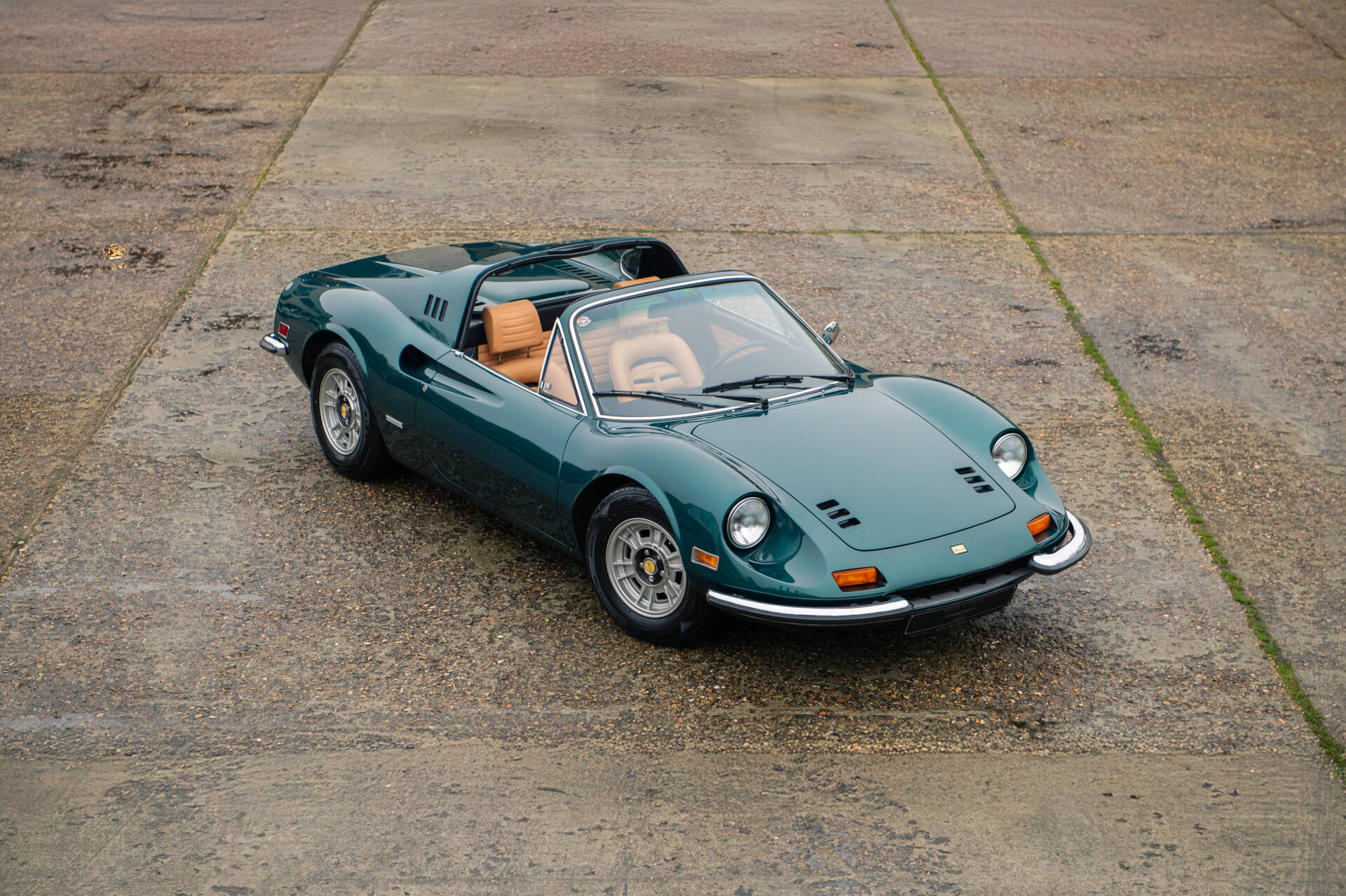
This is not the recovered Ferrari, but with its removable targa top (introduced in 1972) stowed it is a beautiful example of a 1974 GTS that shows the type’s lines very well. (Courtesy of Classic Trader)


